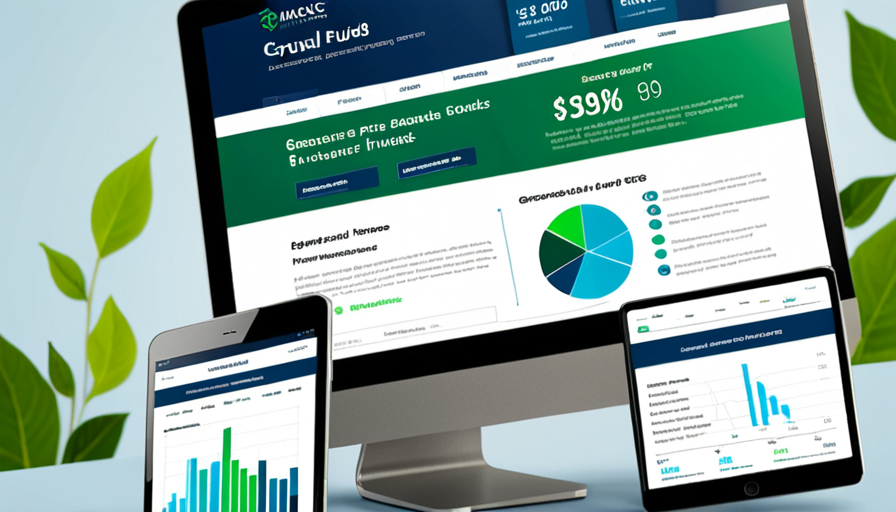How to Invest in International Stocks

investing in international stocks can be an exciting opportunity for investors looking to Diversify their portfolios and capitalize on global economic growth. While investing abroad presents unique opportunities, it also comes with its own set of challenges and considerations. In this comprehensive guide, we will explore the ins and outs of international stock investment, covering everything from understanding global markets to executing your Investment strategy.
Understanding International Markets
Economic Diversity
International markets offer a wealth of economic diversity compared to domestic investments. By investing abroad, you can tap into fast-growing economies in Asia, Latin America, Africa, or emerging European countries. This diversity helps mitigate risks associated with any single country’s economy and provides exposure to sectors that might be underrepresented in your home market.
For instance, the technology sector is dominant in the U.S., but investing internationally allows you to explore other thriving industries like manufacturing in Germany, automotive in Japan, or renewable energy in China. This broadens your Investment horizon and can lead to better risk-adjusted returns over time.
Currency Considerations
investing internationally introduces currency risk as fluctuations between your home currency and the foreign currencies can impact returns. Understanding how these fluctuations work is crucial for managing potential gains or losses due to exchange rate movements. investors often use hedging Strategies, like currency futures or options, to mitigate this risk.
currency risk can be both a friend and foe. A strengthening foreign currency can boost your returns when you convert them back to your home currency, while a weakening one can erode your gains. Keeping an eye on exchange rates and understanding the economic factors driving them is essential for successful international investing.
Political and regulatory environment
The political stability and regulatory framework of a country significantly influence its stock market Performance. investing in countries with stable governments, transparent regulations, and strong legal systems can provide a more predictable Investment environment. Conversely, countries with high political risk or uncertain regulatory environments may offer higher potential returns but come with increased volatility.
For example, investing in emerging markets like Brazil or India can be lucrative due to their rapid economic growth, but investors must also consider the risks associated with Political Instability and regulatory changes. Conducting thorough research and staying informed about global political developments is crucial for navigating these complexities.
Research and Choose Your investments
Market Analysis
Begin with comprehensive market research to understand which countries offer the best opportunities. Consider factors such as economic stability, political environment, regulatory framework, and growth prospects. Reliable sources include global financial news outlets, Investment banks’ reports, and government publications.
When analyzing international markets, look for key indicators like GDP Growth rates, inflation levels, unemployment rates, and trade balances. These metrics provide insights into a country’s economic health and potential for future growth. Additionally, consider qualitative factors such as the quality of infrastructure, education system, and innovation ecosystem, which can drive long-term economic development.
Stock Picking Strategies
Once you’ve identified promising markets, delve into stock picking within those regions. Look for companies with strong fundamentals like robust earnings growth, solid balance sheets, competitive advantages, and good governance practices. Utilize resources such as international brokerage firms, financial advisory services, and Investment research platforms to gather data.
When selecting individual stocks, consider the following factors:
- Earnings Growth: Companies with consistent earnings growth are more likely to deliver strong returns over time.
- Valuation Metrics: Use valuation metrics like price-to-Earnings (P/E) ratio, price-to-Book (P/B) ratio, and Enterprise Value/EBITDA (EV/EBITDA) to assess whether a stock is fairly valued or overpriced.
- dividend yield: For income-focused investors, dividend-paying stocks can provide a steady stream of cash flow. Look for companies with a History of consistent dividend payments and growth.
- Management Quality: The quality of a company’s management team can significantly impact its Performance. Research the backgrounds and track records of key executives to assess their competence and integrity.
Sector Allocation
Diversifying across different sectors within international markets can further enhance portfolio diversification. For example, you might allocate funds to technology companies in South Korea, healthcare firms in Switzerland, or consumer goods manufacturers in Mexico. This approach helps spread risk and capture opportunities from various industries.
When allocating across sectors, consider the following:
- Growth Potential: Identify sectors with strong growth prospects driven by factors like technological innovation, demographic trends, or regulatory changes.
- Cyclical vs. Defensive: Balance your portfolio between cyclical sectors (e.g., industrials, consumer discretionary) that are sensitive to economic cycles and defensive sectors (e.g., utilities, healthcare) that provide stability during downturns.
- Emerging Trends: Stay updated on emerging trends and disruptive technologies that can create new Investment opportunities. For instance, the rise of electric vehicles has boosted demand for lithium and other raw materials, benefiting companies involved in mining and battery production.
Choosing Suitable Investment Vehicles
Exchange-Traded Funds (ETFs)
Exchange-Traded Funds (ETFs) are a popular choice for investing internationally due to their diversification Benefits, liquidity, and cost-effectiveness. ETFs allow you to gain exposure to a broad range of international stocks with a single Investment.
When selecting international ETFs, consider the following:
- Geographic Focus: Choose ETFs that align with your geographic preferences, such as developed markets (e.g., Europe, Japan) or emerging markets (e.g., Brazil, Russia, India, China).
- Sector Exposure: Some ETFs focus on specific sectors within international markets, allowing you to target particular industries.
- Currency Hedging: Certain ETFs offer currency-hedged versions that mitigate the impact of exchange rate fluctuations on your returns.
Mutual Funds
Mutual Funds are another option for investing internationally, offering professional management and diversification. Actively managed Mutual Funds can provide expertise in navigating complex international markets, while passively managed Index Funds aim to replicate the Performance of a specific benchmark.
When evaluating international Mutual Funds, consider the following:
- Fund Manager’s Track Record: Research the fund manager’s experience and track record in managing International investments.
- Expense Ratios: Compare expense ratios to ensure you’re not paying excessive fees that can erode your returns over time.
- Investment Style: Determine whether the fund follows an active or passive Investment style and aligns with your preferences.
Individual stocks
For investors with a higher risk tolerance and the ability to conduct thorough research, investing in individual international stocks can offer significant growth potential. However, this approach requires careful analysis and ongoing monitoring of each company’s Performance.
When investing in individual international stocks, consider the following:
- Company Fundamentals: Conduct a detailed analysis of the company’s financial statements, earnings reports, and competitive position.
- Market Conditions: Stay informed about macroeconomic trends, regulatory changes, and geopolitical developments that can impact the stock’s Performance.
- risk Management: Implement risk management Strategies, such as setting stop-loss orders or diversifying across multiple stocks, to protect your investments.
American Depositary Receipts (ADRs)
American Depositary Receipts (ADRs) are a convenient way to invest in foreign companies listed on U.S. stock exchanges. ADRs represent ownership in the shares of non-U.S. companies and trade like regular stocks.
When investing in ADRs, consider the following:
- Liquidity: Choose ADRs with sufficient trading volume to ensure liquidity and ease of buying/selling.
- Dividend Policy: Some ADRs pay dividends, which can provide a steady income stream for investors.
- currency risk: Be aware of currency risk associated with investing in foreign companies, as fluctuations in exchange rates can impact your returns.
Managing risks
currency risk
As mentioned earlier, currency risk is a significant consideration when investing internationally. To manage this risk, consider the following Strategies:
- Currency Hedging: Use financial instruments like forwards, futures, or options to hedge against adverse movements in exchange rates.
- diversification: Diversify your investments across multiple currencies and regions to reduce the impact of any single currency’s fluctuations on your portfolio.
- Natural Hedging: Invest in companies with significant revenue streams denominated in your home currency, which can provide a natural hedge against currency risk.
Political risk
Political Instability or regulatory changes can significantly impact International investments. To mitigate political risk, consider the following Strategies:
- diversification: Spread your investments across multiple countries and regions to reduce exposure to any single country’s political risks.
- Research: Stay informed about political developments and regulatory changes in the countries where you invest.
- insurance: Consider purchasing political risk insurance to protect against losses resulting from events like expropriation, political violence, or currency inconvertibility.
Economic risk
economic conditions in foreign countries can vary widely and impact your investments. To manage economic risk, consider the following Strategies:
- diversification: Diversify across different economies with varying growth prospects and cyclical patterns.
- Research: Stay updated on macroeconomic trends, such as GDP Growth, inflation, and interest rates, which can influence Investment Performance.
- Flexibility: Maintain a flexible Investment approach that allows you to adjust your portfolio in response to changing economic conditions.
Liquidity risk
Liquidity risk refers to the potential difficulty of buying or selling investments quickly without significantly impacting their price. To manage liquidity risk when investing internationally, consider the following Strategies:
- diversification: Invest in a mix of liquid and illiquid assets to balance your portfolio’s overall liquidity.
- Research: Choose investments with sufficient trading volume and market depth to ensure liquidity.
- cash reserves: Maintain adequate cash reserves to meet short-term obligations or take advantage of new Investment opportunities.
tax considerations
investing internationally can have complex tax implications. To optimize your tax situation, consider the following:
- Tax Treaties: Familiarize yourself with tax treaties between your home country and the countries where you invest, as these can affect your tax liabilities.
- Foreign tax credits: Take advantage of foreign tax credits to offset taxes paid on International investments against your home country’s tax obligations.
- Reporting Requirements: Be aware of reporting requirements for foreign investments, such as filing Form 8938 or FinCEN Form 114 (FBAR) in the United States.
Monitoring and Rebalancing
Regularly monitor your International investments to ensure they align with your financial goals and risk tolerance. Rebalance your portfolio periodically to maintain your desired asset allocation and manage risks effectively.
When monitoring and rebalancing your International investments, consider the following:
- Performance Review: Evaluate the Performance of your International investments relative to their benchmarks and your overall portfolio.
- risk Assessment: Assess the risk profile of your International investments and adjust your allocations as needed to maintain your desired level of risk.
- rebalancing strategy: Develop a rebalancing strategy that outlines when and how you will adjust your portfolio’s asset allocation, such as setting target ranges for each asset class or using a calendar-based approach.
investing internationally offers numerous Benefits, including diversification, growth potential, and exposure to emerging markets. However, it also presents unique challenges and risks that require careful consideration. By understanding the various Investment vehicles, managing risks effectively, and staying informed about global economic trends, you can build a well-diversified international portfolio that aligns with your financial goals.
As always, consult with a Financial advisor or Investment professional to develop a tailored strategy for investing internationally based on your unique circumstances and objectives.
Also read:
